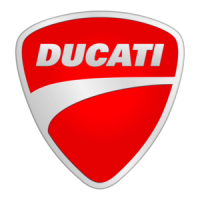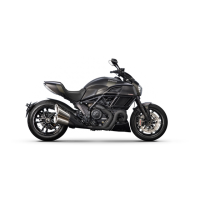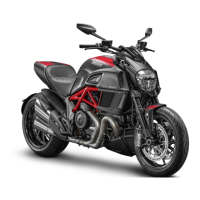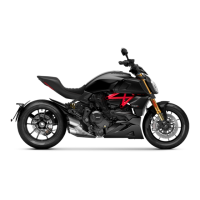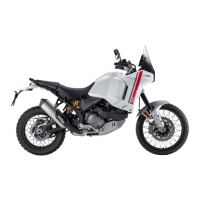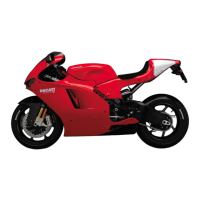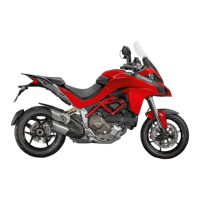Do you have a question about the Ducati Diavel Carbon and is the answer not in the manual?
Understand and follow safety guidelines for responsible riding and accident prevention.
Learn to identify and understand warning symbols indicating potential hazards for rider and others.
Learn how to report vehicle defects that could cause safety issues to authorities.
Emphasizes rider preparation, education, and the importance of appropriate safety clothing.
Explains the origin of carbon monoxide and hydrocarbons from combustion processes.
Details the exhaust, crankcase, and evaporative emission control systems.
Identifies symptoms of emission system issues requiring dealer attention.
Explains the emission control system warranty specific to California regulations.
Outlines owner's duties for maintaining warranty coverage and presenting the vehicle for repairs.
Describes the main LCD display and indicator lights on the handlebar instrument panel.
Recommends professional replacement of the air filter by an authorized Ducati dealer.
Procedure for checking and refilling the engine coolant level in the expansion reservoir.
Understand and follow safety guidelines for responsible riding and accident prevention.
Learn to identify and understand warning symbols indicating potential hazards for rider and others.
Learn how to report vehicle defects that could cause safety issues to authorities.
Emphasizes rider preparation, education, and the importance of appropriate safety clothing.
Explains the origin of carbon monoxide and hydrocarbons from combustion processes.
Details the exhaust, crankcase, and evaporative emission control systems.
Identifies symptoms of emission system issues requiring dealer attention.
Explains the emission control system warranty specific to California regulations.
Outlines owner's duties for maintaining warranty coverage and presenting the vehicle for repairs.
Describes the main LCD display and indicator lights on the handlebar instrument panel.
Recommends professional replacement of the air filter by an authorized Ducati dealer.
Procedure for checking and refilling the engine coolant level in the expansion reservoir.
| Transmission | 6-speed |
|---|---|
| Frame | Tubular steel Trellis frame |
| Front Suspension | Öhlins 48 mm fully adjustable usd fork |
| Front Tire | 120/70 ZR17 |
| Rear Tire | 240/45 ZR17 |
| Fuel Tank Capacity | 17 L (4.5 US gal) |
| Engine Type | L-Twin cylinder, 4 valves per cylinder, liquid cooled |
| Displacement | 1262 cc |
| Power | 162 hp (119 kW) @ 9, 500 rpm |
| Torque | 129 Nm (95 lb-ft) @ 7, 500 rpm |
| Front Brake | Dual 320 mm discs, Brembo calipers, ABS |
| Rear Brake | 265 mm disc, 2-piston caliper, ABS |
| Seat Height | 770 mm (30.3 in) |
| Rear Suspension | Öhlins fully adjustable monoshock |
